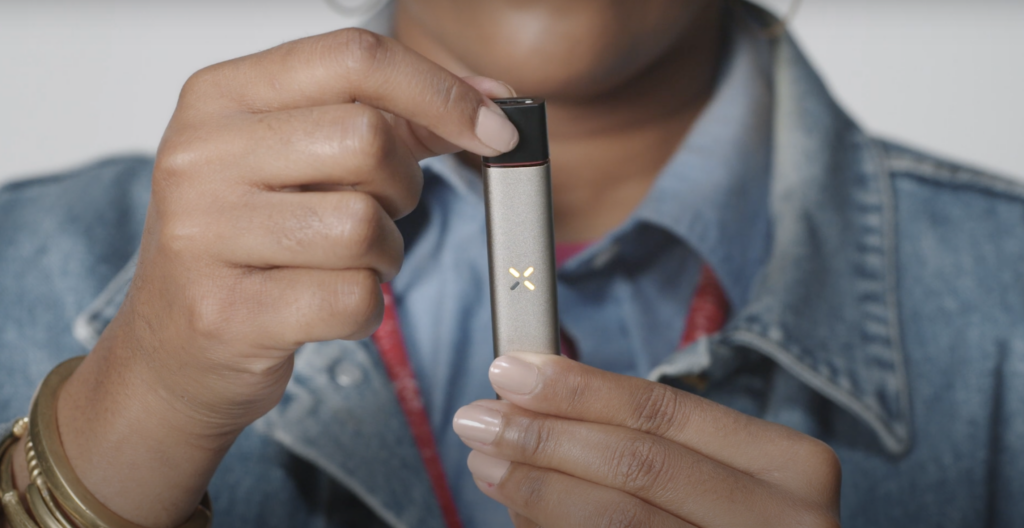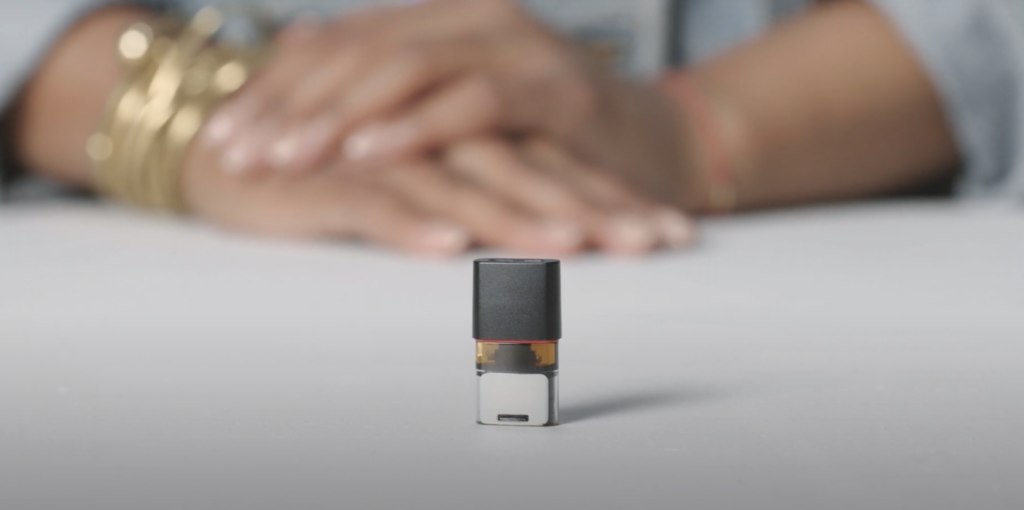What is Pax Weed Pen

A handheld device consisting of a battery attached to a Cartridge filled with cannabis Concentrate. With a Vape Pen, Concentrates are heated, not burned. Instead of smoke, the output is vapor. Because of the lack of smoke and handheld convenience from Pax Weed Pen, some cannabis users prefer vaping over smoking.
Vaping has a long history: Ancient Egyptians used hot stones to inhale vapors emanating from heated herbs, and the “shisha,” more commonly known these days as a hookah, was introduced to India thousands of years ago. Fast forward to 2003, when Chinese pharmacist Hon Lik, who was trying to kick a heavy tobacco smoking habit, figured out how to vaporize nicotine liquid using high-frequency ultrasonic vibration, and put it all in a device that looked like a cigarette. The first e-cigarette vaporizer was introduced to the U.S. in 2007. Today’s vape pens use a tiny heater to do the vaporizing, and of course marijuana consumers use a cannabis concentrate instead of nicotine liquid.
It has been challenging, to say the least, to determine exactly how worried we should be about the phenomenon experts are now calling VAPI (vaping-associated pulmonary illness). It has so far been attributed to 47 deaths and 2,290 confirmed and probable cases in the United States. Most news coverage — and proposed legislative response — has focused on nicotine products like Juul, whose CEO stepped down amidst these public health concerns, replaced by an executive at Altria, a cigarette empire. Walmart, which will continue to sell cigarettes (and guns), has announced plans to stop selling e-cigarettes, and several states have banned them outright. But the CDC has since identified vitamin E acetate as the likely culprit (or, in their words, “chemical of concern”). The chemical was found present in all 29 fluid samples submitted to the CDC for testing, and has been identified as a once-popular additive in black market THC cartridges. This is not to say that we know all THC cartridges without vitamin E are totally safe; because these products are relatively new, and regulations vary state-to-state, there’s still a lot we don’t know about vaping’s safety. Annoyingly, when we say “vaping,” we could be referring to the use of either e-cigarettes or cannabis, thereby conflating the two. In the early months of the vaping crisis, the weed-related part of the story flew under the radar, except on cannabis-specific sites like Leafly.
Is vaping CBD safer than vaping THC?
No, and some experts worry it might be more dangerous. Though CBD is a non-psychoactive component of cannabis, and much more readily available than THC, its regulation is even more erratic. “I’ve got major concerns about the health and safety of the public using CBD products because there are no regulations,” says Ronay. “In most places, e-cigarettes and legal cannabis have some, but CBD has zero. It’s scary that people don’t know what’s in CBD.”
Because CBD is currently marketed as a kind of “vitamin” in the wellness world, companies can say it’s in just about anything, from coffee to leggings. In the best-case scenario, the CBD advertised in a product won’t do much of anything, but in the worst cases, Ronay worries there’s significant opportunity to introduce undisclosed chemical agents, in part because the claims made around its effects are so nebulous. Bright agrees. “In the U.S., particularly with CBD products, there’s not enough regulation,” he says. “In Australia, CBD is a schedule 8 drug, so it’d be like a schedule 2 drug in the U.S. You can’t just go into a 7-11 and buy it.”
Advantages of using vape pens
Vape pens have some advantages over smoking cannabis flower, especially for new consumers.
- They’re convenient. Cartridges are small, transportable, and pre-filled with Distillates and Concentrates. Carrying several of them is much easier than carrying several kinds of flower, and swapping them out is simple.
- They’re discreet. Vape pens are often used by tobacco smokers, so they don’t draw much attention these days. The smell of vapor is also far less pungent than the smell of burning cannabis flower, so vaping could be done — possibly undetected — in many places smoking isn’t allowed.
- They’re less harmful. Studies show that when cannabis is combusted, the smoke that’s inhaled contains at least 100 toxins, some of which can cause cancer. Because vaporizers don’t heat marijuana to the point of combustion, or burning, people who use them aren’t exposed to those toxins. Long-term research on vaping doesn’t exist yet, but a 2010 study of 20 daily cannabis smokers with existing lung conditions found that just one month after using a vaporizer instead, they had “meaningful improvements” in their lung health.
- They’re cleaner. The cartridges are disposable, so there’s no sticky resin to clean up. And the only output is water vapor — no smoke, no ash, no mess.
There are also some disadvantages to opting for a vape pen instead of smoking cannabis flower, such as higher prices, fewer strain varieties, and potential health risks associated with cutting agents.
The anatomy of a Vape Pen
Overall, there are four main parts of a vape pen:
- Tank or cartridge: The container for the cannabis oil that will be vaporized. Tanks made of plastic, glass, or steel are refillable. Pre-filled cartridges are used until they’re empty and thrown away.
- Atomizer: The heating element that vaporizes the cannabis oil.
- Battery: The rechargeable lithium ion battery that powers the vape pen and heats the concentrate. Some batteries activate with the manual press of a button, while just inhaling activates others. Rechargeable batteries often come with a USB charger included. Disposable pens have a pre-charged battery.
- Mouthpiece: The piece through which vapor is inhaled.

Push-button vs. draw-activated vape pens
- Draw-activated vape pens: As the name suggests, these pens are activated when you puff on them. They don’t require you to turn them on or off, and have no buttons to push. They are the easiest type of vape pens to use, but offer less options in terms of functionality when compared to button-activated vape pens.
- Push-button vape pens: These vape pens need to be turned on before use. This is typically done by pressing the button five times in a row. Some push-button vape pens allow you to adjust the voltage output. This is usually done by pressing the button three times in a row. Other vape pens have pre-heat mode which can be activated by pressing the button twice.
Why is my vape pen not working?
Here are some of the most common answers to why our vape pen might not be working.
- Push-button vape pen not on: Click the button five times and try again. Make sure you are holding the button while hitting it or it will not work.
- Cartridge not connected properly: The cartridge might be too loose and is not making a proper connection to the device.
- Incompatible cartridge: Unfortunately, some cartridges are not compatible with all vape pens despite being 510-threaded.
- Defective coil or battery: Sometimes cartridges can come with a defective coil that will not fire. Try it on another battery and if it works, then your vape pen battery might be defective.
- Cartridge is depleted: Once your cartridge is empty it isn’t going to produce vapor, re-fill or replace it.
- Vape pen not charged: Plug it into the charger. Some vape pens have micro-USB or even USB-C charging ports, or the standard 510-threaded USB charger.
Weed oil and distillate carts
Disclaimer: THC oil cartridges are suitable for vaping and are not the same thing as tinctures, which are for oral use only.
Today, the most common use for vape pens is for pre-filled and re-fillable cannabis oil cartridges. Also known as weed pens, these devices are typically compatible with 510-threaded oil carts. To start, remove the rubber seal from the bottom of your oil cartridge and connect it to the battery. Make sure the device is charged and turned on, if it is a push-button vape pen. Also don’t press the button until you start inhaling or it might burn your lips.
- Start with a small puff, and wait a few minutes to gauge the effects, especially if you are new to vaping THC oil. The effects might seem subtle at first, but can creep up on you.
- If your device has multiple voltage settings, start at the lowest setting to avoid dry/burnt hits. (The ideal range for most oil carts is 3.3-3.8 volts.)
- Many of the newer cartridges utilize ceramic-based coils that can handle more voltage without burning out. Some will require more voltage to achieve a satisfying puff.
- Check the best 510 thread batteries to see other devices available for vaping cartridges.
